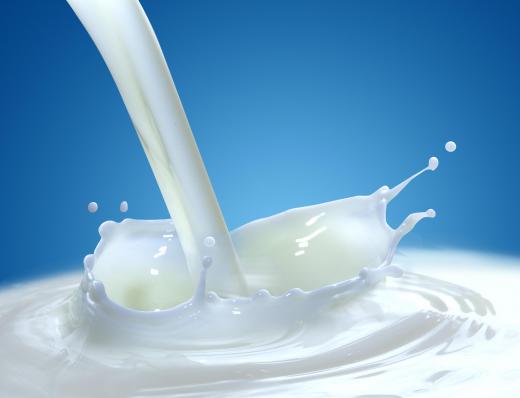What Is Lactose Fermentation?
Fermentation is the anaerobic, energy-yielding breakdown of organic substances via bacteria, yeast or other microorganisms. Milk sugar, better known as lactose, imparts a characteristic sweetness to dairy products. It is chemically a disaccharide consisting of the two chemically united monosaccharides glucose and galactose. Lactose fermentation, depending upon the microorganism involved, can produce different products, but most common among them is lactic acid, a viscous acid with the chemical formula CH3CH(OH)COOH. Fermentation can be used to remove lactose from foods, which is beneficial for those who are lactose-intolerant; lactose fermentation should not be confused with lactic acid fermentation.
Mechanisms of lactose fermentation are less well known than one might anticipate. This may be due, in part, to an assumption and theory propounded by the greatly respected biochemist Emil Fischer, that lactose yeast fermentation begins first with cleavage of the disaccharide into its substituent sugars; this assumption went largely unchallenged for decades. Evidence now exists that this assumption may not be true. In fact, in the instance of bacterial lactose fermentation within the intestine, the mechanistic pathway varies along with the choice of bacterium. Most of those pathway mechanisms are multi-stepped and complex: see the cited references for further details.

Lactose intolerance results from a shortage of the enzyme lactase, ordinarily found in the duodenum or first part of the small intestine. Since it cannot be directly absorbed through the small intestine, all the lactose remaining passes on to the colon, where it is fermented by some of the bacteria. The result is voluminous quantities of gas, leading to painful cramps, bloating and diarrhea for the sufferer. One way of handling the difficulty is to eat foods naturally low in lactose, or from which lactose has been removed. Another way of handling it is to add supplements of the enzyme β-galactosidase — manufactured using the fungus Aspergillus — to the diet.

Milk-based products are rich in both lactic acid and the protein casein. Lactose fermentation to lactic acid increases the food acidity; the acid combines with the casein, and the two coagulate and precipitate. The precipitate is then removed from the milk, and the dairy product derived from it is low in — or free of — lactose. Alternatively, there are dairy-like, plant-based soy, rice, almond and other food substitutes. Non-dairy foods containing lactose include processed meats, some gravies, chips and sauces. Intolerance is not usually absolute; sufferers can usually consume at least some lactose, so his or her diet may include at least some of lactose-containing foods without necessitating the use of supplements.
AS FEATURED ON:
AS FEATURED ON:















Discussion Comments
@Chmander - Though I don't know for sure, I do know that it's made in a very similar fashion. In fact, one time, I heard the story about the discovery of yogurt. Ages ago, a nomad was traveling in the desert with a sack of milk. Though he was successful in his travels, his milk had "spoiled" in the hot sun. However, when he had went to taste it, it was still edible, and was basically a milky curdled substance. This is how yogurt was discovered.
Correct me if I'm wrong, but isn't lactose fermentation how yogurt is made? In other words, isn't it curdled?
Post your comments